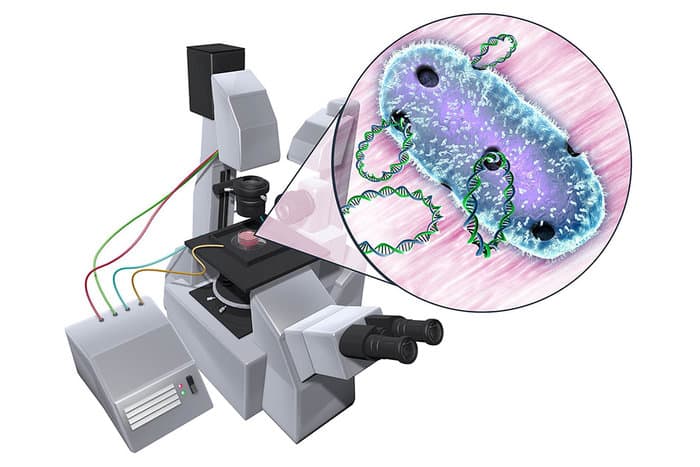Genetic Engineering All Set To Take A Giant Leap With New Microfluidic Device
MIT engineers have recently constructed a microfluidic device in order to quickly scan a range of electric potentials required for the genetic material, DNA to get into a cell. Genetic engineering initially requires the experimental DNA to get inside the target cell. To achieve this goal, scientists took the help of a novel electroporation approach in which the target cell is exposed to an electric field. When the electric field is at an ideal value , pores appear on the cell membrane that eventually accepts the DNA's entry.
Cullen Buie, the Esther and Harold E. Edgerton Associate Professor of mechanical engineering at MIT explained that determining the exact electric field magnitude is achieved by tedious manual research which takes substantial amount of time. Having very rich biodiversity, the information banks for almost all types of cells fall short.
Like an invasive surgery, the technique comes with a risk. The electric field magnitude should be at that optimum value that opens the pores, but isn't too strong to retain them after the DNA is passed inside. Also, the process depends upon external parameters such as the solution density in which the cells are immersed.

In artist imagination: DNA entering Bacteria
The new Microfluidic device takes care of all ideal conditions required to perform DNA insertion and significantly shortens the time required to identify exact parameter values for the job to get done. The device sports a channel created using soft lithography technology. When an electric field is applied on the device, the geometry of the channel produces a range of electric potentials as output.
The team stacked several strains of bacteria inside the device, which in turn controlled the exact environment to let the foreign body get inside. If successfully permeated by the electric field, the cells take in the external fluorescent marker which lights up in the presence of DNA. Repeating the process a number of times, scientists were able to gather a pile of information to help them in future study.
Garcia, a team member reported that the microfluidic device will facilitate genetic engineering of many different cell types and will certainly contribute in areas including drug discovery, regenerative medicine, cancer therapy and DNA vaccination. The research was supported by DARPA and the National Science Foundation. The whole report was published in the ‘Nature Scientific Reports’ journal.
Watch how microfluidic device works:
Source: <a href="https://news.mit.edu/2016/microfluidic-device-dna-insertion-bacteria-genetic-engineering-0219" target="_blank" rel="nofollow noopener noreferrer">Breaking through the bacteria barrier | MIT News | Massachusetts Institute of Technology</a>
Cullen Buie, the Esther and Harold E. Edgerton Associate Professor of mechanical engineering at MIT explained that determining the exact electric field magnitude is achieved by tedious manual research which takes substantial amount of time. Having very rich biodiversity, the information banks for almost all types of cells fall short.
Like an invasive surgery, the technique comes with a risk. The electric field magnitude should be at that optimum value that opens the pores, but isn't too strong to retain them after the DNA is passed inside. Also, the process depends upon external parameters such as the solution density in which the cells are immersed.

In artist imagination: DNA entering Bacteria
The new Microfluidic device takes care of all ideal conditions required to perform DNA insertion and significantly shortens the time required to identify exact parameter values for the job to get done. The device sports a channel created using soft lithography technology. When an electric field is applied on the device, the geometry of the channel produces a range of electric potentials as output.
The team stacked several strains of bacteria inside the device, which in turn controlled the exact environment to let the foreign body get inside. If successfully permeated by the electric field, the cells take in the external fluorescent marker which lights up in the presence of DNA. Repeating the process a number of times, scientists were able to gather a pile of information to help them in future study.
Garcia, a team member reported that the microfluidic device will facilitate genetic engineering of many different cell types and will certainly contribute in areas including drug discovery, regenerative medicine, cancer therapy and DNA vaccination. The research was supported by DARPA and the National Science Foundation. The whole report was published in the ‘Nature Scientific Reports’ journal.
Watch how microfluidic device works:
Source: <a href="https://news.mit.edu/2016/microfluidic-device-dna-insertion-bacteria-genetic-engineering-0219" target="_blank" rel="nofollow noopener noreferrer">Breaking through the bacteria barrier | MIT News | Massachusetts Institute of Technology</a>
0

